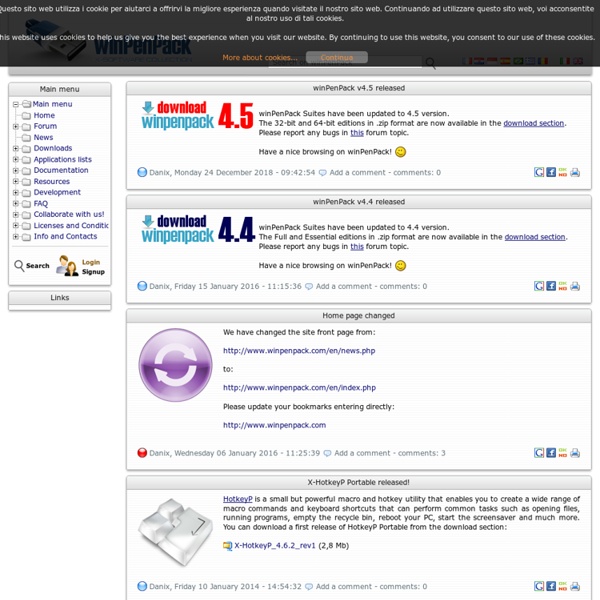



Pendriveapps Take Screenshots & Share Them Across The Network Using Kidsnapper There are many famous screenshot taking tools like GreenShot and Shotty, which enable grabbing and editing screenshots. However, sometimes one requires capturing screenshots from not just the current system, but also from remote computers (e.g., servers) to check whether required processes are running or not. Moreover, it can also be necessary to share your screen with other users across a network which may have various operating system like Windows, Mac or Linux. Kidsnapper is a portable screenshot taking and sharing tool that not only allows grabbing screenshots from your current desktop, but also makes it possible to share screenshots with remote computers via local web server. This can help people using various operating system platforms to get screenshots from Windows-based computers. Kidsnapper registers Shift+Print and CTRL+Print hotkey combinations for capturing entire desktop and capturing current window, respectively. Download Kidsnapper Advertisement
English to French, Italian, German & Spanish Dictionary Lupo PenSuite GoGet: Manage Scattered Data By Copying Format-Specific Files As time goes by, our photos, songs, movies, documents and other data gets cluttered up, and scattered in our computer. Resultantly, it often happens that when we are looking for a particular file, we can’t find it, because we don’t know its exact location. You can use the search function to look for your files, but that requires you to have the files properly named and tagged. If the files are stored with random names, the only way for you to find them is by knowing their exact location. Its interface is as simple as it can get. The application will first calculate the number of files associated with the specified format, and then copy all the files into the new folder. You can also add Templates in the application to perform redundant tasks, such as just copying out the songs from your downloads folder where everything is downloaded. GoGet works on both3 2-bit and 64-bit versions of Windows XP, Wndows Vista and Windows 7. Download GoGet Advertisement
Pillola: [JAVA] Connettere un'applicazione Java ad un database MySQL | HTML Dato che non mi sembrava costruttivo lasciare la pillola a metà, ho deciso di completarla fornendo anche una classe che permetta la connessione di un'applicazione Java ad un database utilizzando il bridge JDBC-ODBC. Questo tipo di connessione, infatti, risulta utile in tutti quei casi dove il reperimento di un driver JDBC sia difficile o impossibile. Inoltre, questo metodo di connessione permette l'accesso ai database single-file (come sono, ad esempio, i database Microsoft Access). La classe qui di seguito offre, come nel precedente caso, i metodi per il reperimento dei record (esecuzione query SELECT) e di aggiornamento (esecuzione query UPDATE); un set minimale anche in questo caso, che può essere ampliato a piacere. Vediamo il codice e, successivamente, spieghiamo come funziona e quali sono le caratteristiche che offre: public class ODBCDatabase { public ODBCDatabase(String nomeDSN) { this.nomeDSN = nomeDSN; attributi = new String[0][0]; connesso = false; } return connesso; } return v; }
AudioKey, une compilation portable pour l'audio AudioKey est une nouvelle compilation de logiciels portables que j'ai créé pour Freewares et Tutos et ses lecteurs. Comme vous l'aurez compris d'après son nom, elle est consacrée au domaine de l'audio. Le téléchargement (en zip) fait 68 Mo. Une fois décompressée, la clé AudioKey fait 149 Mo. Avec ces outils vous pourrez : - écouter de la musique- convertir des fichiers audio- extraire la partie audio de vidéos- éditer les tags des fichiers audio- créer vos pochettes de disques- contrôler votre iPod- enregistrer n'importe quelle source audio- écouter et enregistrer les radios- graver des CD audio et des compilations MP3- retoucher et éditer vos fichiers audio- gérer votre collection audio Cette compilation regroupe 22 logiciels, certains en français et la plupart présentés sur le blog. Vous pouvez utiliser cette compilation à partir de votre disque dur, d'un CDRom ou de votre clé USB puisqu'il n'y a rien à installer !. Liste des logiciels contenus dans AudioKey : Téléchargement :
Ethervane Echo Automatically Sorts Your Clipboard Entries Into Tabs Previously, we have covered a lot of clipboard managers, such as ClipX, Ace Clipboard and Free Clipboard Manager, all with their unique functionalities like managing clipboard entries through hotkeys and saving clipboard items & screenshots. Ethervane Echo is a portable clipboard manager that keeps track of your clipboard history without interfering with the default Windows clipboard. Unlike other clipboard managers, it automatically sorts the clipboard entries into different tabs, such as Default, Sticky, Used, Last hour, URLs etc., allowing you to quickly access the required clipboard entries. It allows you to select and mark the important clipboard entries as Sticky, edit entries both inside the manager and in an external text editor, and search for a particular entry using the built-in search function. Once extracted and executed, the application will quietly run in your system tray and can be accessed by simply clicking its icon. Download Ethervane Echo [via ghacks] Advertisement
Freewares & Tutos Key (Suite d'applications Portables) La Freewares & Tutos Key est une une suite d'applications qui regroupe plusieurs freewares provenant de la Framakey, de la Portableapps key mais aussi d'autres Freewares. La clé se lance au démarrage via le logiciel Pstart, dans le lanceur automatique de windows XP vous trouverez un lien "Programmes Cle Usb". En cliquant sur le lien vous lancerez le menu déamarré, où vous trouverez les différentes rubriques de la clé. "Bureautique / Multimedia / Gravure / Internet / Utilitaires / Compression / Recuperation de donnees / Systeme" Voici la liste des applications regroupées dans la clé. Faire une explication de tous les logiciels serait trop longue, donc il y a un lien pour chaque application afin d'avoir plus d'infos et explications... Donc avec cette clé vous aurez une suite d'applications très complète pour différentes situatons.J'ai volontairement occulté la suite Openoffice pour limiter l'espace pris par cette suite d'applications. Téléchargement du fichier (sur mon site) : ICI Utilitaires_